
About this Release
- Georges Auric
- August Louis Baeyens
- Jacques Benoist-Méchin
- Mélanie Bonis
- Henri Cliquet-Pleyel
- Emmanuel Durlet
- Henri Dutilleux
- Daniel Éricourt
- Pierre-Octave Ferroud
- Reynaldo Hahn
- Jacques Ibert
- Désire-Émile Inghelbrecht
- Jean Lensen
- André Messager
- Darius Milhaud
- Hubert Mouton
- Gabriel Pierné
- Maurice Ravel
- Manuel Rosenthal
- Camille Saint-Saëns
- Erik Satie
- Pierre Vellones
“Paris, 1925. The cafés and bistros are full of foreigners, mostly Americans. Hemingway, Joyce, Pound, Cocteau, Aragon, Breton and Tzara write, discuss and create modernity. Chanel dictates fashion, Man Ray photographs everyone. What music do they hear in the streets? What rhythms accompany them in the evening when they enter the Boeuf sur le toit, where tout-Paris gathers? In the most fashionable club, where Jean Wiéner and Clément Doucet play back to back, and where Cocteau occasionally sits on the drums, only jazz is heard. Dances from overseas are the latest rage and will remain so for more than a decade. This is the fourth volume in my Foxtrots series and I invite you to join me in discovering the musical fascination of "le tumulte noir" in France and Belgium.” — Gottlieb Wallisch
20TH CENTURY FOXTROTS • 4
France and Belgium
- Gottlieb Wallisch, piano
Gottlieb Wallisch continues his acclaimed survey of jazz-influenced piano literature. In this volume we explore le tumulte noir (‘the Black craze’) in the French-speaking countries after the First World War, taking us to Paris and Brussels where the mood was hot for dancing. The fashionable status of this new craze attracted writers, composers, intellectuals and artists from all over the world, with American jazz music as the latest rage in the cafes and bistros of the day. The influence of dances from overseas spread like wildfire, taking hold amongst French and Belgian composers eager to free themselves from Germanic Wagnerism while riding the wave of popularity of hit records and cinema.
Tracklist
|
Saint-Saëns, Camille
|
|
1
Lola, Op. 116: Tango (1900) (00:02:12)
|
|
Satie, Erik
|
|
2
La diva de l'Empire (Intermezzo américain d'après la célèbre chanson de Bonnaud, Blès et Satie) (arr. H. Ourdine for piano) (1904) (00:02:26)
|
|
3
Rag-Time Parade (arr. H. Ourdine for piano) (1917) (00:01:59)
|
|
Milhaud, Darius
|
|
4
Caramel Mou, Op. 68 (version for piano) (1920) (00:03:07)
|
|
Cliquet-Pleyel, Henri
|
|
2 Blues (version for piano) (1922) (00:05:00 )
|
|
5
No. 1. Come along * (00:02:09)
|
|
6
No. 2. Far away (00:02:51)
|
|
Messager, André
|
|
7
L'amour masqué, Act I: Tango chanté: Valentine a perdu la tête (arr. for piano as Tango) (1923) * (00:02:09)
|
|
Éricourt, Daniel
|
|
8
Pièce en forme de rag (1924) * (00:01:21)
|
|
Rosenthal, Manuel
|
|
9
8 Bagatelles: No. 6. Rag (1924) (00:01:17)
|
|
Pierné, Gabriel
|
|
10
Impressions de music-hall, Op. 47: Girls (French Blues) (arr. for piano) (1927) * (00:03:24)
|
|
Hahn, Reynaldo
|
|
11
Le temps d'aimer, Act III: Charleston (arr. for piano) (1926) * (00:01:18)
|
|
12
Une revue: Los Enamorados, Tango-Habanera (arr. for piano) (1926) * (00:02:28)
|
|
Inghelbrecht, Désire-Émile
|
|
13
Le Diable dans le Beffroi: Little Black Man, Fox-Trot (arr. for piano) (1926) * (00:01:35)
|
|
Ravel, Maurice
|
|
14
L'enfant et les sortilèges (excerpts arr. H. Gil-Marchex for piano as Five o'clock Fox-Trot) (1925) (00:06:34)
|
|
Wiéner, Jean
|
|
15
Haarlem (1929) (00:02:39)
|
|
16
Olive chez les nègres, ou Le village blanc: The White Village Onestep (version for piano) (1926) * (00:01:27)
|
|
Ferroud, Pierre-Octave
|
|
17
13 Danses: The Bacchante, Blues (1929) (00:03:39)
|
|
Bonis, Mélanie
|
|
18
5 Petites pièces: No. 3. Boston valse, ou Valse lente, Op. 119 (1928) * (00:01:13)
|
|
Benoist-Méchin, Jacques
|
|
19
Équateur: No. 5. Rag-Nocturne (version for piano) (1927) * (00:05:12)
|
|
Auric, Georges
|
|
À nous la liberté (arr. for piano) (1931) (00:01:00 )
|
|
20
Magic-Park, Fox-Trot (00:00:54)
|
|
21
Tango-Nocturne (00:02:11)
|
|
Vellones, Pierre
|
|
22
La Reine de Biarritz: Biarritz-Fox, Fox-Trot (arr. for piano) (1934) * (00:01:40)
|
|
Ibert, Jacques
|
|
23
La Maison du Maltais: Burlesque-Fox (arr. for piano) (1938) * (00:02:19)
|
|
Dutilleux, Henri
|
|
24
Le Café du Cadran: Fox (arr. for piano) (1947) * (00:01:35)
|
|
Mouton, Hubert
|
|
25
Jumbo's Two-Step (arr. for piano) (1911) * (00:02:46)
|
|
Lensen, Jean
|
|
26
Siberia, Fox-Trot (arr. for piano) (1923) * (00:02:09)
|
|
Baeyens, August Louis
|
|
27
Jazz Fantaisie (1926) * (00:02:19)
|
|
Doucet, Clément
|
|
28
Montparnasse (1931) * (00:02:29)
|
|
29
Wiener Luft (1931) * (00:01:58)
|
|
Durlet, Emmanuel
|
|
30
Tragische tango (1943) (00:04:27)
|
The Artist(s)
 Born in Vienna, Gottlieb Wallisch first appeared on the concert platform when he was seven years old, and at the age of twelve made his debut in the Golden Hall of the Vienna Musikverein. A concert directed by Yehudi Menuhin in 1996 launched Wallisch’s international career: accompanied by the Sinfonia Varsovia, the seventeen-year-old pianist performed Beethoven’s ‘Emperor’ Concerto.
Since then Wallisch has received invitations to the world’s most prestigious concert halls and festivals including Carnegie Hall in New York, Wigmore Hall in London, the Cologne Philharmonie, the Tonhalle Zurich, the NCPA in Beijing, the Ruhr Piano Festival, the Beethovenfest in Bonn, the Festivals of Lucerne and Salzburg, December Nights in Moscow, and the Singapore Arts Festival. Conductors with whom he has performed as a soloist include Giuseppe Sinopoli, Sir Neville Marriner, Dennis Russell Davies, Kirill Petrenko, Louis Langrée, Lawrence Foster, Christopher Hogwood, Martin Haselböck and Bruno Weil.
Orchestras he has performed with include the Vienna Philharmonic and Vienna Symphony Orchestras, the Royal Liverpool Philharmonic, the Gustav Mahler Youth Orchestra, the Frankfurt Radio Symphony, the Festival Strings Lucerne, the Franz Liszt Chamber Orchestra in Budapest, the Musica Angelica Baroque Orchestra in Los Angeles, and the Stuttgart Chamber Orchestra.
Born in Vienna, Gottlieb Wallisch first appeared on the concert platform when he was seven years old, and at the age of twelve made his debut in the Golden Hall of the Vienna Musikverein. A concert directed by Yehudi Menuhin in 1996 launched Wallisch’s international career: accompanied by the Sinfonia Varsovia, the seventeen-year-old pianist performed Beethoven’s ‘Emperor’ Concerto.
Since then Wallisch has received invitations to the world’s most prestigious concert halls and festivals including Carnegie Hall in New York, Wigmore Hall in London, the Cologne Philharmonie, the Tonhalle Zurich, the NCPA in Beijing, the Ruhr Piano Festival, the Beethovenfest in Bonn, the Festivals of Lucerne and Salzburg, December Nights in Moscow, and the Singapore Arts Festival. Conductors with whom he has performed as a soloist include Giuseppe Sinopoli, Sir Neville Marriner, Dennis Russell Davies, Kirill Petrenko, Louis Langrée, Lawrence Foster, Christopher Hogwood, Martin Haselböck and Bruno Weil.
Orchestras he has performed with include the Vienna Philharmonic and Vienna Symphony Orchestras, the Royal Liverpool Philharmonic, the Gustav Mahler Youth Orchestra, the Frankfurt Radio Symphony, the Festival Strings Lucerne, the Franz Liszt Chamber Orchestra in Budapest, the Musica Angelica Baroque Orchestra in Los Angeles, and the Stuttgart Chamber Orchestra. The Composer(s)
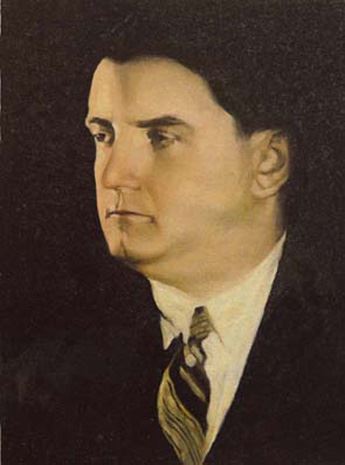 A member of the group of young French composers of the early 1920s known as ‘Les Six’, Georges Auric was a prolific composer, while serving until World War II as a music critic and in the 1960s as director of the Paris Opéra and Opéra-comique. In style he ranged from the clarity espoused by Les Six to later experiments with serialism.
A member of the group of young French composers of the early 1920s known as ‘Les Six’, Georges Auric was a prolific composer, while serving until World War II as a music critic and in the 1960s as director of the Paris Opéra and Opéra-comique. In style he ranged from the clarity espoused by Les Six to later experiments with serialism. 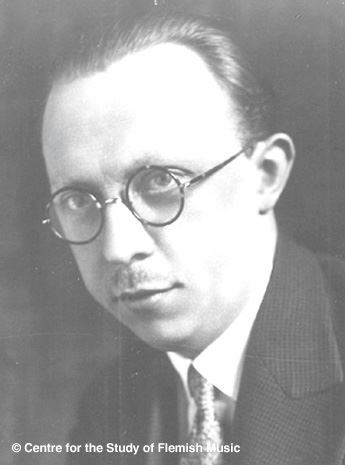 August Louis Baeyens, who was born and died in Antwerp, was a violist and composer in the classical sphere with a musical language open to the avant-garde. From 1927 to 1932, at the head of the Antwerps Kamermuziekensemble (‘Antwerp Chamber Ensemble’), which he founded, he gave many Belgian premieres of music by Schoenberg, Berg, Milhaud, Bartók, Hindemith, Stravinsky, and several Flemish composers. He ranged in almost all genres: operas, eight symphonies, six string quartets and choral music.
August Louis Baeyens, who was born and died in Antwerp, was a violist and composer in the classical sphere with a musical language open to the avant-garde. From 1927 to 1932, at the head of the Antwerps Kamermuziekensemble (‘Antwerp Chamber Ensemble’), which he founded, he gave many Belgian premieres of music by Schoenberg, Berg, Milhaud, Bartók, Hindemith, Stravinsky, and several Flemish composers. He ranged in almost all genres: operas, eight symphonies, six string quartets and choral music.  Mélanie Bonis composed mostly in the last decades of her long life. Born in Paris and introduced very early to César Franck and then taught by him, Ernest Guiraud and Ambroise Thomas at the Conservatoire, she was soon forced by her family to quit a musical career and marry a businessman twice her age. Her tragic story would merit a novel, but despite her bourgeois environment, with the encouragement of a lover who spurred her to continue her compositions, Mel Bonis (this is her nom de plume) wrote almost three hundred works, mostly piano pieces.
Mélanie Bonis composed mostly in the last decades of her long life. Born in Paris and introduced very early to César Franck and then taught by him, Ernest Guiraud and Ambroise Thomas at the Conservatoire, she was soon forced by her family to quit a musical career and marry a businessman twice her age. Her tragic story would merit a novel, but despite her bourgeois environment, with the encouragement of a lover who spurred her to continue her compositions, Mel Bonis (this is her nom de plume) wrote almost three hundred works, mostly piano pieces. 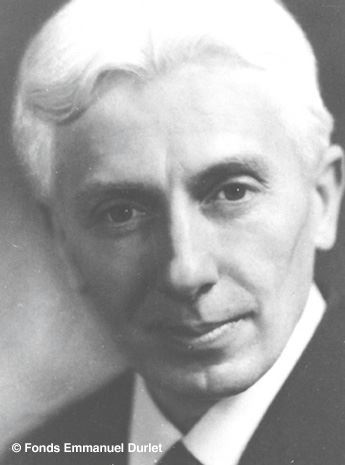 A composer from Antwerp, Emmanuel Durlet was an outstanding pianist who had perfected his skills in Vienna with Leopold Godowsky just before the outbreak of the First World War.
A composer from Antwerp, Emmanuel Durlet was an outstanding pianist who had perfected his skills in Vienna with Leopold Godowsky just before the outbreak of the First World War. 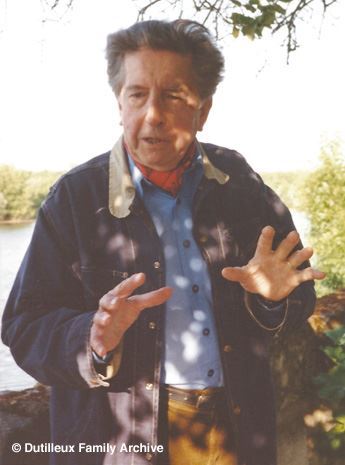 Born in Angers on 22 January 1916, Henri Dutilleux grew up in Douai, studying piano, harmony and counterpoint at the conservatoire there with Victor Gallois, before moving to Paris in 1933. At the Paris Conservatoire he studied with the Gallon brothers, as well as with Maurice Emmanuel and Henri Büsser, winning the Prix de Rome in 1938 with the cantata L’anneau du roi. Returning to France at the outbreak of war, he worked at the Paris Opéra; then, in 1945, began an 18-year tenure as director of music productions at Radio France. From 1963 he devoted himself to composition, while being in demand as a guest teacher in France and at summer schools abroad. He died in Paris on 22 May 2013.
Born in Angers on 22 January 1916, Henri Dutilleux grew up in Douai, studying piano, harmony and counterpoint at the conservatoire there with Victor Gallois, before moving to Paris in 1933. At the Paris Conservatoire he studied with the Gallon brothers, as well as with Maurice Emmanuel and Henri Büsser, winning the Prix de Rome in 1938 with the cantata L’anneau du roi. Returning to France at the outbreak of war, he worked at the Paris Opéra; then, in 1945, began an 18-year tenure as director of music productions at Radio France. From 1963 he devoted himself to composition, while being in demand as a guest teacher in France and at summer schools abroad. He died in Paris on 22 May 2013. 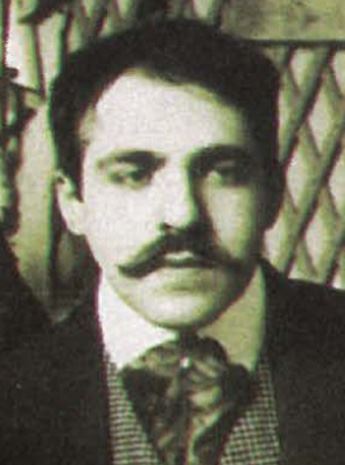 Born in Caracas, Reynaldo Hahn moved with his family to Paris at the age of three. There he studied at the Conservatoire under Massenet and made a particular impression with his songs, which he sang himself. His interest in the theatre led to his appointment in 1945 as director of the Paris Opéra.
Born in Caracas, Reynaldo Hahn moved with his family to Paris at the age of three. There he studied at the Conservatoire under Massenet and made a particular impression with his songs, which he sang himself. His interest in the theatre led to his appointment in 1945 as director of the Paris Opéra. 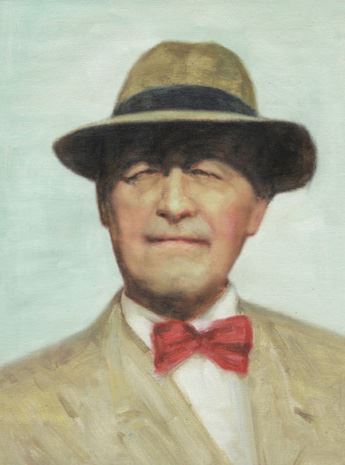 Jacques Ibert, a winner of the Prix de Rome at the Paris Conservatoire, was for a number of years director of the French Academy in Rome. Versatile and prolific, he wrote operas, ballets and music for the theatre, cinema and radio in addition to vocal and instrumental works, all equally beautifully crafted, with particularly idiomatic handling of wind instruments. He died in Paris in 1962.
Jacques Ibert, a winner of the Prix de Rome at the Paris Conservatoire, was for a number of years director of the French Academy in Rome. Versatile and prolific, he wrote operas, ballets and music for the theatre, cinema and radio in addition to vocal and instrumental works, all equally beautifully crafted, with particularly idiomatic handling of wind instruments. He died in Paris in 1962. 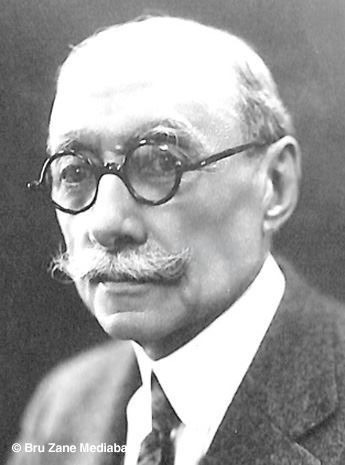 André Messager was one of those who had a successful career on the English side of the Channel, as a composer, conductor and administrator—he worked in the latter role at Covent Garden between 1901 and 1907.
André Messager was one of those who had a successful career on the English side of the Channel, as a composer, conductor and administrator—he worked in the latter role at Covent Garden between 1901 and 1907.  Born into a Jewish family in the southern French city of Aix-en-Provence, Darius Milhaud was trained at the Paris Conservatoire; originally a violinist, he turned to composition. He enjoyed a close association with the diplomat-poet Paul Claudel, whom he accompanied to Brazil as secretary when Claudel was appointed Minister at the French delegation in Rio de Janeiro. On his return to Paris in 1918, after two years abroad, Milhaud was for a time in the circle of Jean Cocteau and a member of the diverse group of French composers known as Les Six. Extremely prolific as a composer in many genres, Milhaud spent the years of the Second World War in the United States, where he taught, combining this position with a similar post at the Paris Conservatoire after 1947.
Born into a Jewish family in the southern French city of Aix-en-Provence, Darius Milhaud was trained at the Paris Conservatoire; originally a violinist, he turned to composition. He enjoyed a close association with the diplomat-poet Paul Claudel, whom he accompanied to Brazil as secretary when Claudel was appointed Minister at the French delegation in Rio de Janeiro. On his return to Paris in 1918, after two years abroad, Milhaud was for a time in the circle of Jean Cocteau and a member of the diverse group of French composers known as Les Six. Extremely prolific as a composer in many genres, Milhaud spent the years of the Second World War in the United States, where he taught, combining this position with a similar post at the Paris Conservatoire after 1947.  A pupil of César Franck and Massenet and successor of the former as organist at Ste Clotilde in Paris, Gabriel Pierné won distinction as a composer and as a conductor, in the second capacity directing the Concerts Colonne from 1903, at first as a deputy to Eduard Colonne and then as his successor from 1910 until 1934. As a composer he was versatile, whether in more serious music or in a lighter-hearted but always technically assured idiom.
A pupil of César Franck and Massenet and successor of the former as organist at Ste Clotilde in Paris, Gabriel Pierné won distinction as a composer and as a conductor, in the second capacity directing the Concerts Colonne from 1903, at first as a deputy to Eduard Colonne and then as his successor from 1910 until 1934. As a composer he was versatile, whether in more serious music or in a lighter-hearted but always technically assured idiom.  French, of paternal Swiss and maternal Basque descent, Ravel combined skill in orchestration with meticulous technical command of harmonic resources, writing in an attractive musical idiom that was entirely his own in spite of contemporary comparisons with Debussy, a composer his senior by some 20 years.
French, of paternal Swiss and maternal Basque descent, Ravel combined skill in orchestration with meticulous technical command of harmonic resources, writing in an attractive musical idiom that was entirely his own in spite of contemporary comparisons with Debussy, a composer his senior by some 20 years.  Once described as the French Mendelssohn, Camille Saint-Saëns was talented and precocious as a child, with interests by no means confined to music. He made an early impression as a pianist. Following established French tradition, he was for nearly 20 years organist at the Madeleine in Paris and taught briefly at the École Niedermeyer, where he befriended his pupil Gabriel Fauré. He was a co-founder of the important Société Nationale de Musique with the patriotic aim of promoting contemporary French music in the aftermath of the Franco-Prussian war of 1870-01, in which he had served in the Garde Nationale de la Seine. Prolific and versatile as a composer, he contributed to most genres of music, but by the time of his death in 1921 his popularity in France had diminished considerably, as fashions in music had changed.
Once described as the French Mendelssohn, Camille Saint-Saëns was talented and precocious as a child, with interests by no means confined to music. He made an early impression as a pianist. Following established French tradition, he was for nearly 20 years organist at the Madeleine in Paris and taught briefly at the École Niedermeyer, where he befriended his pupil Gabriel Fauré. He was a co-founder of the important Société Nationale de Musique with the patriotic aim of promoting contemporary French music in the aftermath of the Franco-Prussian war of 1870-01, in which he had served in the Garde Nationale de la Seine. Prolific and versatile as a composer, he contributed to most genres of music, but by the time of his death in 1921 his popularity in France had diminished considerably, as fashions in music had changed. 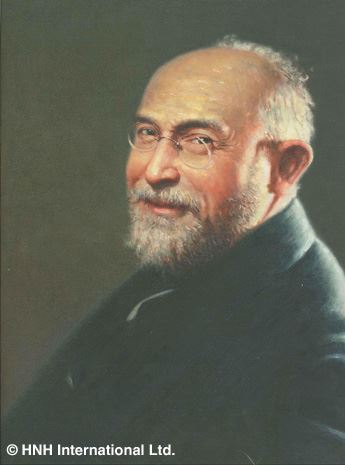 A French composer as eccentric in his way of life as in his music, Satie exercised considerable influence over some of his more distinguished contemporaries, including Debussy, Ravel and Poulenc, particularly through his tendency towards extreme simplicity. A number of his compositions have become very familiar to many, largely through their use in other contexts.
A French composer as eccentric in his way of life as in his music, Satie exercised considerable influence over some of his more distinguished contemporaries, including Debussy, Ravel and Poulenc, particularly through his tendency towards extreme simplicity. A number of his compositions have become very familiar to many, largely through their use in other contexts. 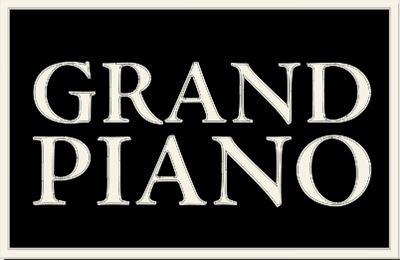


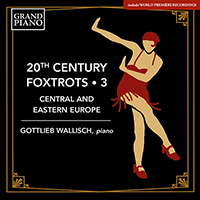
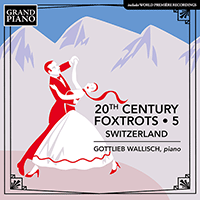


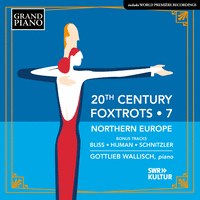
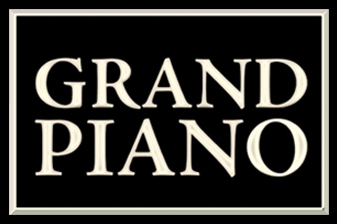 Grand Piano has gained a reputation for producing high quality recordings of rare keyboard gems. Dedicated to the exploration of undiscovered piano repertoire, the label specialises in complete cycles of piano works by many lesser-known composers, whose output might otherwise have remained unknown and unrecorded.
Grand Piano has gained a reputation for producing high quality recordings of rare keyboard gems. Dedicated to the exploration of undiscovered piano repertoire, the label specialises in complete cycles of piano works by many lesser-known composers, whose output might otherwise have remained unknown and unrecorded.






